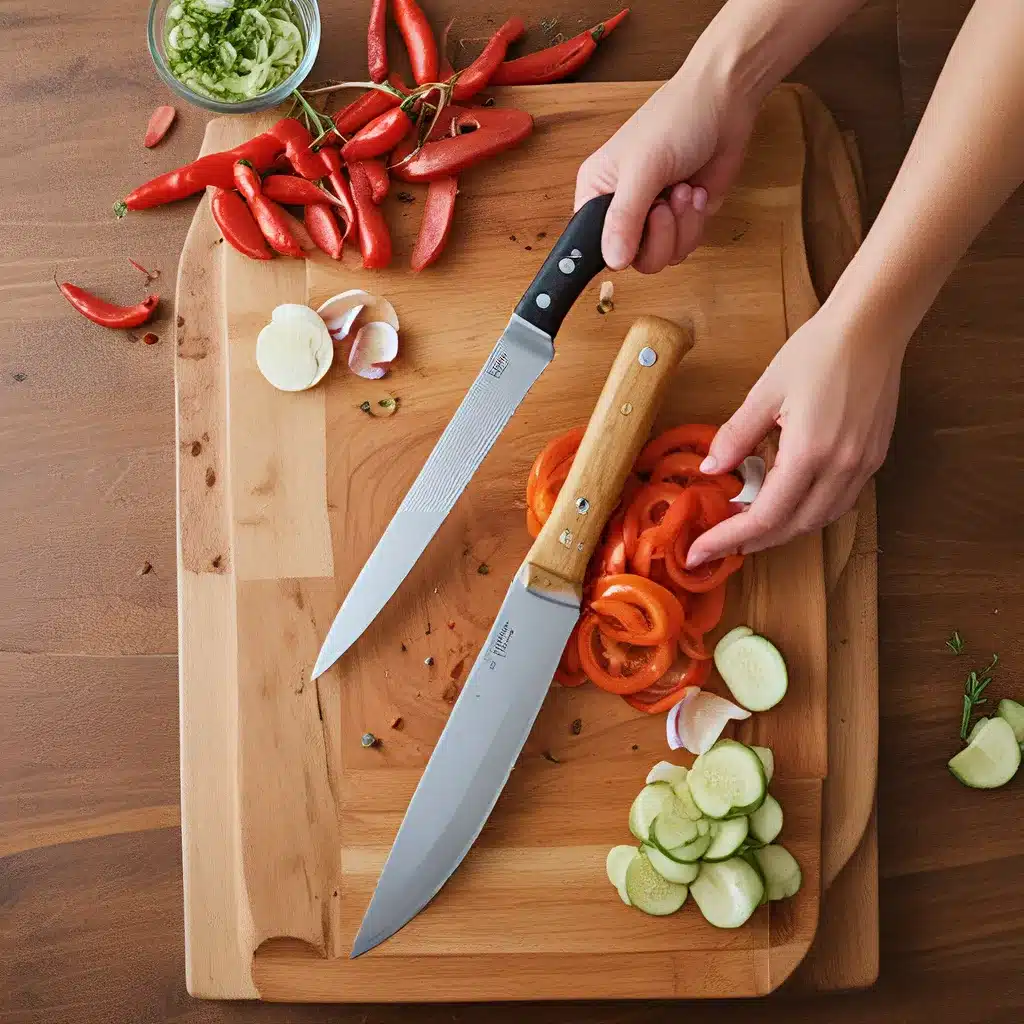
As a self-proclaimed lazy cook, I’ve always been on the hunt for ways to streamline my kitchen routine. Let’s face it, when you’re juggling work, chores, and a social life, the last thing you want to do is spend hours prepping meals. That’s why I’m here to share my favorite time-saving knife skills that will have you slicing and dicing like a pro in no time.
The Basics: Knife Grip and Stance
The key to efficient knife work is all in the grip. Rather than gripping the knife handle with your whole hand, try the pinch grip. Place your thumb and index finger on either side of the blade, near the bolster (the thick part where the blade meets the handle). This gives you better control and stability, allowing you to guide the knife precisely.
Now, for your stance. Stand with your feet shoulder-width apart, one foot slightly in front of the other. This wide, balanced stance will keep you steady and prevent fatigue as you slice and dice. Remember to keep your elbows tucked in close to your body – this allows for more controlled, fluid movements.
Slicing and Dicing: Techniques to Save Time
The Claw Grip
This is a game-changer for quickly and safely dicing vegetables. Simply curl your fingers under, keeping the tips tucked safely under your knuckles. Your thumb and index finger will guide the knife, while the rest of your hand acts as a secure ‘claw’ to hold the food in place. This allows you to slice through ingredients rapidly without the risk of nicking your fingertips.
The Rocking Motion
Instead of the traditional up-and-down chopping motion, try a smooth rocking motion when mincing herbs or small ingredients. Gently rock the knife back and forth, keeping the tip grounded and using the full length of the blade. This creates a consistent, fine chop without the need for repeated lifts and drops of the knife.
The Julienne Cut
Cutting vegetables into thin matchstick-like strips, known as a julienne, is a great way to add texture and visual appeal to your dishes. Start by slicing the ingredient into thin planks, then stack the planks and slice them lengthwise into thin strips. This uniform cut not only looks impressive, but it also ensures even cooking.
The Diagonal Slice
For items like onions or scallions, try cutting on a diagonal rather than straight across. This creates longer, thinner slices that will distribute more evenly throughout your dish. Plus, the angled cuts add a touch of visual flair.
Meal Prep: Streamlining Your Workflow
One of the biggest time-sinks in the kitchen is prepping ingredients. But with a little planning and strategic knife work, you can set yourself up for success.
When doing your weekly grocery run, take a few extra minutes to wash, trim, and pre-chop any produce you know you’ll be using. Store the prepared ingredients in airtight containers in the fridge, and you’ll have a head start on your cooking.
Another trick is to double-up on certain ingredients. If a recipe calls for half an onion, go ahead and dice the whole thing. That way, you’ll have the other half ready to go for your next meal.
And don’t forget to utilize all the parts of your ingredients. Carrot tops, celery leaves, and herb stems can all be used to add flavor to stocks, sauces, and more. Just give them a quick chop before tossing them in.
Knife Maintenance: Keep Your Blades Sharp
I can’t stress enough the importance of sharp knives. Dull blades require more force, which leads to increased risk of slips and cuts. Plus, they just don’t do the job as efficiently.
Make a habit of honing your knives regularly using a sharpening steel or electric sharpener. And every few months, take them in for a professional sharpening. This will keep your blades in top condition and make your time in the kitchen much safer and more enjoyable.
The Right Knife for the Job
Having the appropriate knife for each task can make all the difference. A sturdy chef’s knife is great for general chopping and slicing, while a serrated bread knife excels at, well, slicing bread. A paring knife is perfect for delicate work like peeling and deveining shrimp.
I’ll let you in on a little secret – Herman Knives has an amazing selection of high-quality, versatile kitchen knives that will revolutionize your cooking. Their blades stay sharper for longer, and the ergonomic handles reduce hand fatigue. Trust me, investing in a good set of knives is worth every penny.
Putting It All Together
Mastering knife skills takes practice, but the payoff is huge. Imagine how much time you’ll save not having to chop, dice, and mince your way through endless meal prep. Plus, your dishes will look restaurant-worthy with those perfectly uniform cuts.
So, the next time you’re tempted to order takeout, remember the power of your trusty knife. With a little technique and a whole lot of confidence, you’ll be slicing and dicing your way to delicious, homemade meals in no time.
Now, if you’ll excuse me, I’ve got some onions to julienne.


